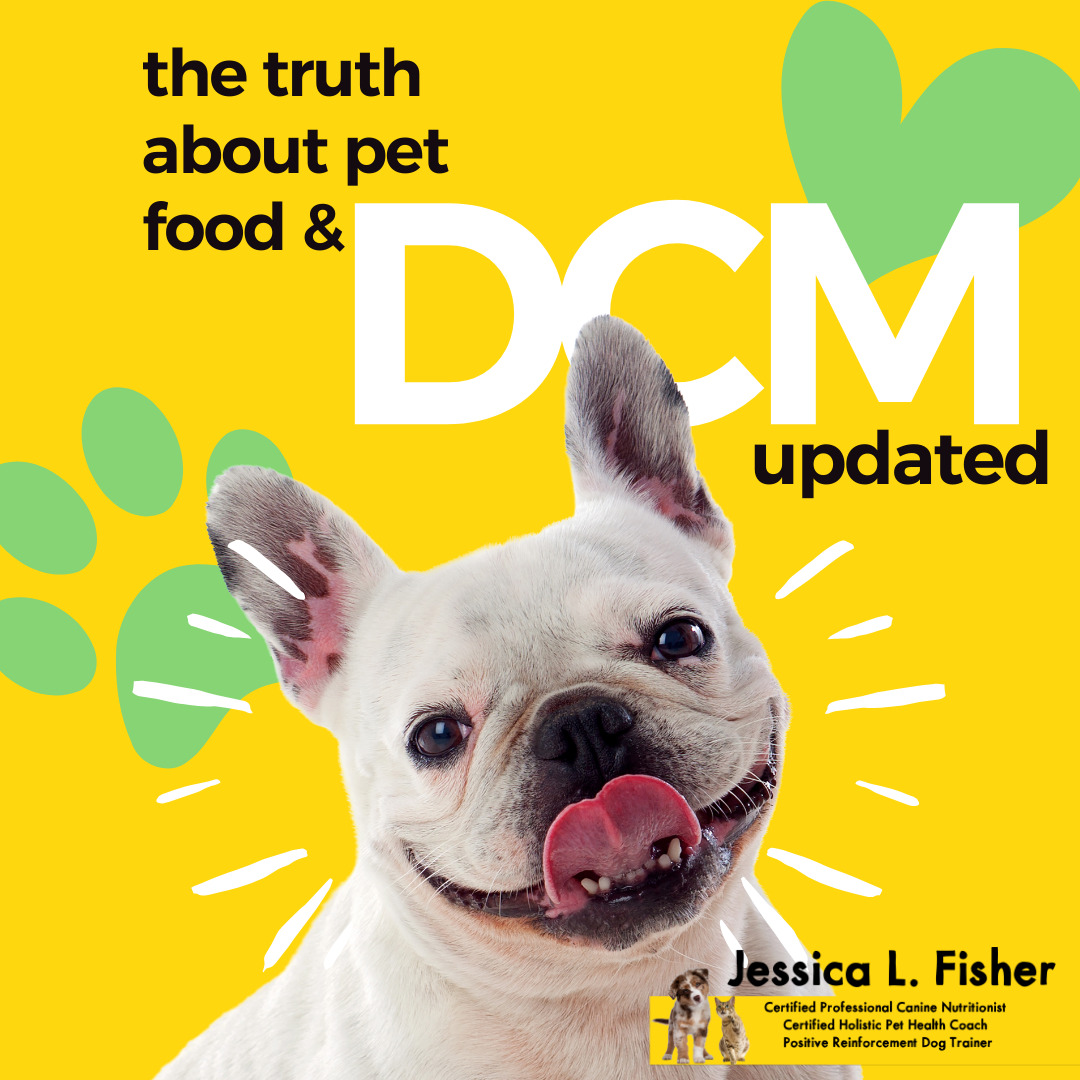We know that the 2 things we can do to improve our health are to eat healthier and move more. The same is true with our dogs (and our cats). This post is specifically talking about supercharging your dogs’ bowls, we’ll do a separate post about feeding cats so as not to confuse the two.
Regardless of what stage you are in with feeding your dog, be it a full kibble (dry food) diet, a DIY raw diet, a commercially available raw or cooked food, home-cooked or any hybrid thereof, adding superfoods to the bowl can provide some serious supercharged nutrition! Here are just a few superfoods you can add.
Here is the link to the full video (live on Sunday 1/23/22):
YouTube: https://youtu.be/KziF7h5BhXs
Rumble: https://rumble.com/vszhug-11-foods-to-supercharge-your-dogs-bowl.html
1. Sardines
I buy sardines packed in water with no salt added, but if you can get them fresh, all the better. Sardines are an excellent source of Omega-3, Vitamins D & B-12, amino acids, and CoQ10. They also help develop muscle and boost the immune system. Best of all, because they are small fish, their mercury levels are very low.
Small dogs can have one sardine per day. Large dogs can have 2 sardines per day.
2. Fresh berries
Blueberries and cranberries contain polyphenols which are powerful antioxidants that can destroy inflammation-causing free radicals in the body. They can help lower blood sugar, reduce inflammation and inhibit tumor growth. Strawberries can help fight zombie cells in the body (The
Forever Dog book). yes, zombie cells are a thing and strawberries can help. Cranberries can also help reduce urinary tract infections.
Feed in moderation and only what your dog can tolerate. For example, a small dog will only need about 8-10 blueberries a day and are considered a treat.
3. Mushrooms
Rule of thumb, if a mushroom is safe for you to eat, it is safe for your dog to eat. Mushrooms have anti-viral, anti-bacterial, and anti-tumor properties. They also provide a good source of fiber that feeds the good gut bacteria, which improves the immune system. They can also help lower cholesterol and regulate blood sugar.
Best served steamed or sauteed in coconut oil or olive oil. Suggested 1 tbsp per 25 pounds.
4. Bone Broth
Bone broth is absolutely amazing because of all the nutrients derived from the bone marrow during the cooking process. It contains glucosamine and chondroitin, both supporting joint health and can help slow the progression of degenerative disease. Bone broth is great for recovery periods or fasting periods. It can also help heal the gut and decrease inflammation.
Feeding guidelines: Under 20 pounds 1 oz per day, 20-40 pounds 2 oz per day, 50-80 pounds 4 oz per day, 80+ pounds 6 oz per day.
5. Dark leafy greens
Yes, dogs are carnivores. No, they do not produce amalyse in their saliva to break down plant matter. However, their pancreas has evolved to help the digestive system break down plant matter. The catch … we need to help them out a bit by finely chopping, steaming or sauteing the veggies before we feed them. This gives the body a head start on breaking down the cell walls inside the plants to extract all those wonderful nutrients.
Dark leafy greens, such as kale and spinach, contain phytonutrients that give them antioxidant and anti-inflammatory properties. They contain generous amounts of calcium, iron, potassium and vitamins A, C, and K.
Veggies should make up 10% or less of your dogs daily diet.
6. Eggs
Eggs are an incredible source of protein as well as fat soluble vitamins A, D, E, and K. You can feed eggs raw or cooked.
Most dogs can eat several eggs a week without problems, however it should not be the sole source of protein for any dog.
7. Ginger
We already know that ginger helps soothe the gut and decrease nausea, but it also can help fight cancer and relieve arthritis. Ginger can also help soothe the tummy for car rides or to settle a grumbly tummy.
Preferrably feed the fresh grated root. Small to medium dogs 1/4 to 1/2 tsp. Large dogs up to 3/4 tsp.
8. Turmeric
The active ingredient in turmeric is curcumin which is responsible for its antioxidant, anti-inflammatory, antiviral, antibacterial, and antifungal properties. It is good for helping with symptoms of arthritis as well as fighting cancer. Turmeric is used to make Golden Paste because the addition of black pepper enhances the benefits.
Small dogs can start with 1/4 tsp per day.
9. Pumpkin
Pumpkin is my go-to when my dog’s tummy is a bit upset. I do a half ground turkey (cooked) and the half pumpkin because it is a good source of soluble and insoluble fiber, which helps regulate the bowels. Pumpkin is also a good source of beta-carotene which improves immune health and strengthens the eyes.
- 1 tsp for small dogs, 1 tbsp for larger dogs per day
- 10. Raw local honey
- Disclaimer: honey should not be fed to cats or to puppies.
- For adult dogs, raw local honey contains small amounts of bee pollen, which helps the body fight off environmental allergens. Honey is also soothing to the throat, so can be given to a cough. It can also be used topically to treat cuts and scrapes because it has anti-bacterial properties.
- Feed 1/4 tsp per 20 pounds daily.
11. Coconut oil
Coconut oil is interesting because it contains MCT (medium chain triglycerides) which are much easier to digest and translate to energy, not fat, in the body. Coconut oil is known to improve digestion, increase energy, help digestive upset, balance blood sugar, relieve inflammation such as arthritis, boost immunity, moisturize the skin and coat, help brain development, and can prevent brain dysfunction. Coconut oil is also naturally antibacterial and antifungal.
Start with 1/4 tsp daily for small dogs.
I’ve tried to find the most agreed-upon feeding guidelines to provide for each supplemental food in this list, however, it is always best to feed the dog in front of you. Every dog is different and their needs are all different. If you find something works for your dog and it’s at a different amount or frequency of feeding, great! It’s also a good idea to stay on top of your dog’s health through annual physical exams (bi-annual for seniors) as well as blood and nutrition panels.




